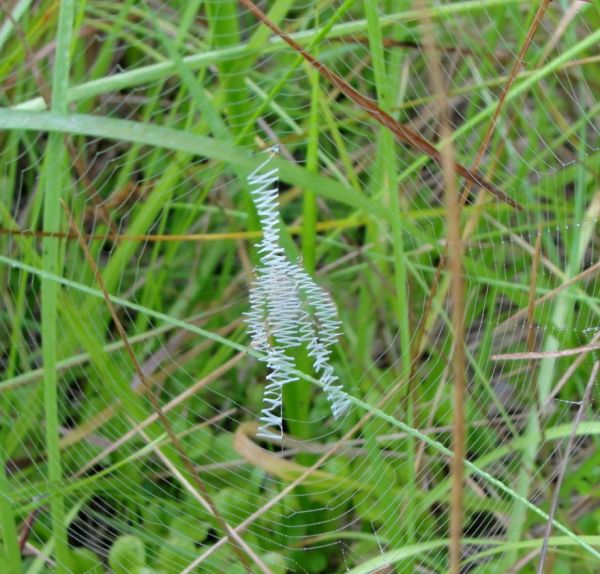by Matt Soniak
By
the spring of 1862, a year into the War Between the States, Major General
Ulysses S. Grant had pushed deep into Confederate territory along the
Tennessee River. In early April, he was camped at Pittsburg Landing,
near Shiloh, Tennessee, waiting for Maj. Gen. Don Carlos Buell’s army to
meet up with him.
On the morning of April 6, Confederate troops based out of nearby
Corinth, Mississippi, launched a surprise offensive against Grant’s
troops, hoping to defeat them before the second army arrived. Grant’s
men, augmented by the first arrivals from the Ohio, managed to hold some
ground, though, and establish a battle line anchored with artillery.
Fighting continued until after dark, and by the next morning, the full
force of the Ohio had arrived and the Union outnumbered the Confederates
by more than 10,000.
The Union troops began forcing the Confederates back, and while a
counterattack stopped their advance it did not break their line.
Eventually, the Southern commanders realized they could not win and fell
back to Corinth until another offensive in August (for a more detailed
explanation of the battle, see this
animated history).
All told, the fighting at the Battle of Shiloh left more than 16,000
soldiers wounded and more 3,000 dead, and neither federal or Confederate
medics were prepared for the carnage.
The bullet and bayonet wounds were bad enough on their own, but
soldiers of the era were also prone to infections. Wounds contaminated
by shrapnel or dirt became warm, moist refuges for bacteria, which could
feast on a buffet of damaged tissue. After months marching and eating
field rations on the battlefront, many soldiers’ immune systems were
weakened and couldn’t fight off infection on their own. Even the army
doctors couldn’t do much; microorganisms weren’t well understood and the
germ theory of disease and antibiotics were still a few years away.
Many soldiers died from infections that modern medicine would be able to
nip in the bud.
A Bright Spot
Some of the Shiloh soldiers sat in the mud for two rainy days and
nights waiting for the medics to get around to them. As dusk fell the
first night, some of them noticed something very strange: their wounds
were glowing, casting a faint light into the darkness of the
battlefield. Even stranger, when the troops were eventually moved to
field hospitals, those whose wounds glowed had a better survival rate
and had their wounds heal more quickly and cleanly than their
unilluminated brothers-in-arms. The seemingly protective effect of the
mysterious light earned it the nickname “Angel’s Glow.”
In 2001, almost one hundred and forty years after the battle,
seventeen-year-old Bill Martin was visiting the Shiloh battlefield with
his family. When he heard about the glowing wounds, he asked his mom - a
microbiologist at the USDA Agricultural Research Service who had
studied luminescent bacteria that lived in soil - about it.
“So you know, he comes home and, 'Mom, you're working with a glowing
bacteria. Could that have caused the glowing wounds?’” Martin
told Science Netlinks. “And so, being a scientist, of course I said, ‘Well, you can do an experiment to find out.’”
And that’s just what Bill did.
He and his friend, Jon Curtis, did some research on both the bacteria
and the conditions during the Battle of Shiloh. They learned that
Photorhabdus luminescens,
the bacteria that Bill’s mom studied and the one he thought might have
something to do with the glowing wounds, live in the guts of parasitic
worms called nematodes, and the two share a strange lifecycle. Nematodes
hunt down insect larvae in the soil or on plant surfaces, burrow into
their bodies, and take up residence in their blood vessels. There, they
puke up the
P. luminescens bacteria living inside
them. Upon their release, the bacteria, which are bioluminescent and
glow a soft blue, begin producing a number of chemicals that kill the
insect host and suppress and kill all the other microorganisms already
inside it. This leaves
P. luminescens and their nematode partner to feed, grow and multiply without interruptions.
As the worms and the bacteria eat and eat and the insect corpse is
more or less hollowed out, the nematode eats the bacteria. This isn’t a
double cross, but part of the move to greener pastures. The bacteria
re-colonize the nematode’s guts so they can hitch a ride as it bursts
forth from the corpse in search of a new host.
The next meal shouldn’t be hard to find either, since
P. luminescens already sent them an invitation to the party. Just before they got got back in their nematode taxi,
P. luminescens were
at critical mass in the insect corpse, and scientists think that that
many glowing bacteria attract other insects to the body and make the
nematode’s transition to a new host much easier.
A Good Light
Looking at historical records of the battle, Bill and Jon figured out that the weather and soil conditions were right for both
P. luminescens and
their nematode partners. Their lab experiments with the bacteria,
however, showed that they couldn’t live at human body temperature,
making the soldiers’ wounds an inhospitable environment. Then they
realized what some country music fans already knew:
Tennessee in the spring
is green and cool. Nighttime temperatures in early April would have
been low enough for the soldiers who were out there in the rain for two
days to get hypothermia, lowering their body temperature and giving
P. luminescens a good home.
Based on the evidence for
P. luminescens’s presence
at Shiloh and the reports of the strange glow, the boys concluded that
the bacteria, along with the nematodes, got into the soldiers’ wounds
from the soil. This not only turned their wounds into night lights, but
may have saved their lives. The chemical cocktail that
P. luminescens uses
to clear out its competition probably helped kill off other pathogens
that might have infected the soldiers’ wounds. Since neither
P. luminescens nor
its associated nematode species are very infectious to humans, they
would have soon been cleaned out by the immune system themselves (which
is not to say you should be self-medicating with bacteria;
P. luminescens infections
can occur, and can result in some nasty ulcers). The soldiers shouldn’t have been thanking the angels so much as the microorganisms.
As for Bill and Jon, their study earned them first place in team competition at the
2001 Intel International Science and Engineering Fair.








